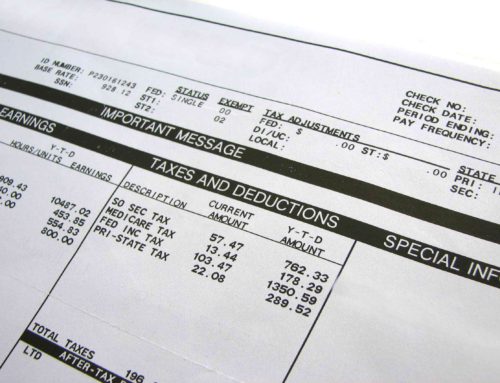As I sat down to write this post, the first 5 minutes of research were spent determining the appropriate way to write “front-load”. Is it one word or two? Is it hyphenated? Is it actually a word that I can use in this context or is it only used to describe washers and dryers? Turns out it’s used across a number of industries. In this post, surprise surprise, I’m talking about front-loading in the context of personal finance. What does it mean and why should you care about it? I’ll also talk about some strategies for making it happen. Oh, and as you can see, I went with the hyphenated spelling.

What is front-loading?
Let’s start with what I mean when I say, front-load. Here, many writers would include a dictionary definition and say something like, “Merriam-Webster defines front-loading as…” In the words of Tina Fey, “Not going to. Not gonna do that.” That audio sound byte is from an outro on Donald Glover’s (now just-as-well known as Childish Gambino) 2012 mixtape, Royalty. That’s extremely random and irrelevant to the point of this post, but eh, now you know.
Back to front-loading (#wordplay). Front-loading, in the way that we’re discussing it, means to pull actions or tasks forward in a process cycle and do them sooner than would typically be done. When it comes to money, we typically talk about spreading saving and spending out evenly over some period of time. Consider a large purchase like a house or a car where you’d likely get financing. The lender creates the financing terms, which means paying back the loan in predetermined intervals over the term duration. For example, when you finance a car, you agree to pay some fixed amount every month for so many months, usually between 36 and 72 months. We typically apply this same concept in reverse when we save. We set a savings target and then contribute a certain fraction of that savings goal each week/month until we reach it.
Retirement savings are a great example of this, especially because the contributions are bounded by the calendar year. When we contribute to our 401(k), IRA, HSA, etc, we look at the target contribution amount and divide by 12 (the number of months in the year) to get how much we’ll contribute per month. This strategy works well because the timing fits with our income replenishment (aka paychecks), it provides predictability and it allows for automation. You do the same thing every month so you don’t have to think about it. Perfect! But what if you took it up a level? This is where front-loading comes in. Instead of spreading your contributions out over the entire year, you make the full contribution (or at least as much as you can), at the beginning of the year.
Why would you want to do this?
Time and compound interest are your best friends when it comes to your retirement savings. The longer your money is invested, the more time it has to grow. This is the rationale for front-loading…to get more money invested sooner. Instead of contributions trickling in throughout the year, the money’s got the entire year to grow. In addition to the growth potential, knocking out the contributions up front checks that box and eliminates the possibility of finding excuses not to contribute at some point later in the year.
How does it work?
At this point, you may be doing some math in your head and wondering how you could possibly front-load your retirement accounts. TMWG, that’s a lot of money. And even if you’ve got the income, how do you even do it? I’m glad you asked. Let’s take a look at strategies for each account:
Pro Tip: If you receive bonuses or commissions at your job, another strategy to consider employing is using some of that bonus/commission money (or all of it if you’ve got the stomach for it) to front-load your retirement accounts. This strategy would work across all three of the accounts referenced above.
Now Do It
To put these strategies in place for your 401(k) and HSA (assuming the HSA is managed through your company), access your company’s benefits site or work with your company’s benefits coordinator to have your contributions adjusted. If you can do it online, great. If you have to work with someone internally on the HR side, let them know what you’re trying to do so they can help you set up the deductions properly.
For the IRA/Roth IRA, you’ll need to handle this one on your own outside of your company’s systems. This involves making a direct transfer from your bank into your IRA account. You should already have your bank account linked to your IRA account and be able to schedule a transfer. If you’ve got the funds available, take a deep breath and make the transfer. It might feel hard to click the submit button on moving that much, but future you will be thankful you did.
Pro Tip: In order to receive the benefit of front-loading, particularly in your IRA/Roth IRA and HSA accounts, be sure that once the money is transferred into the retirement account, you actually allocate it to an investment. In these accounts, the default landing place when money is contributed is typically cash or essentially a no-growth money market account. It’s not doing any good there. Be sure to go into the account and invest the money somewhere once it’s been transferred. It’s your choice what to invest in, but like a broken record, I like low-cost index funds.
What’s your take on front-loading? Any other strategies you like?







